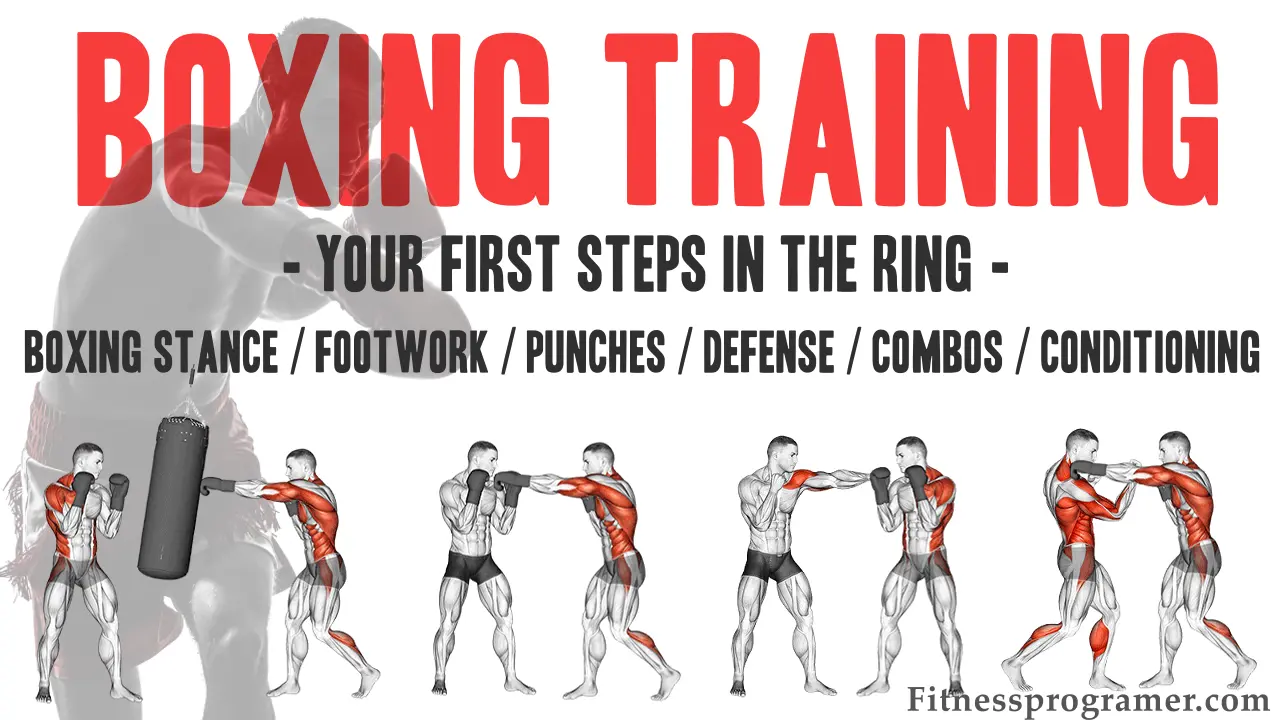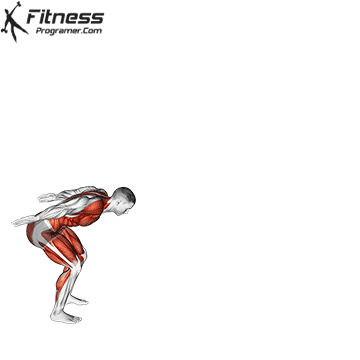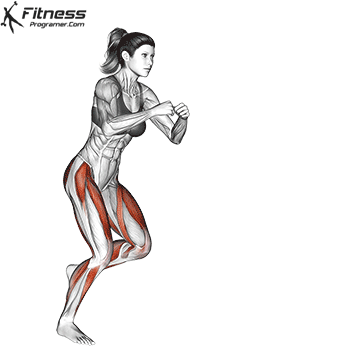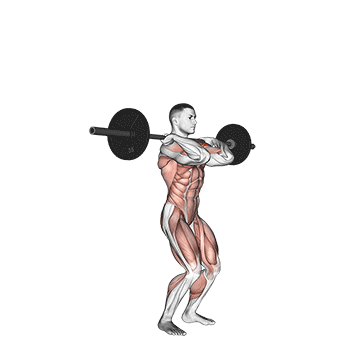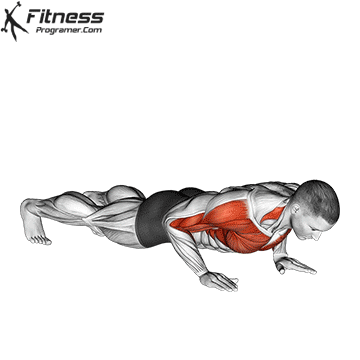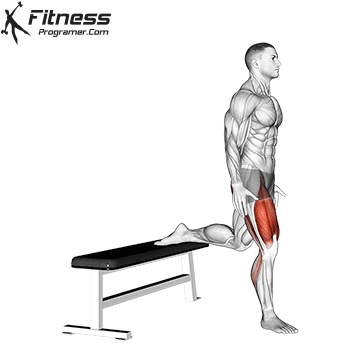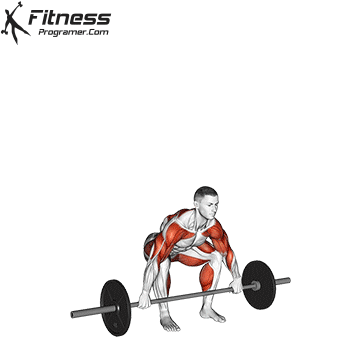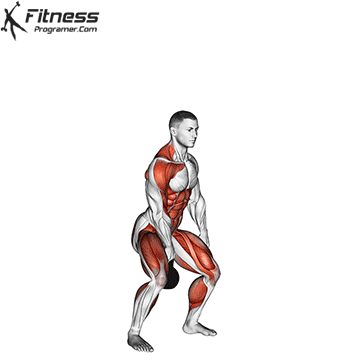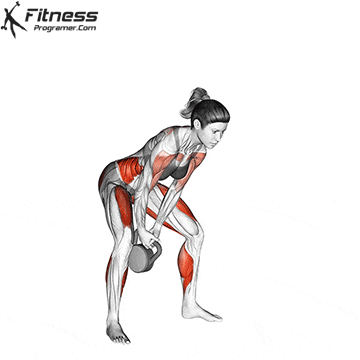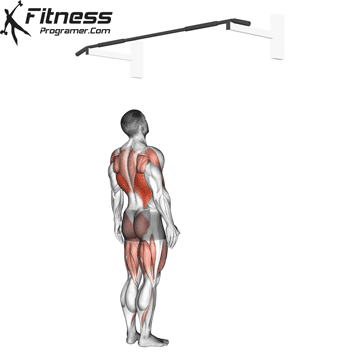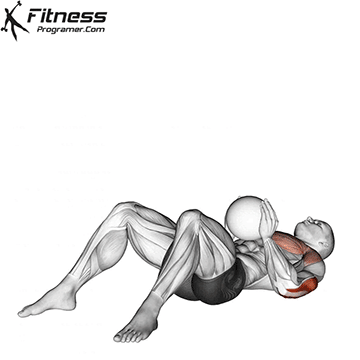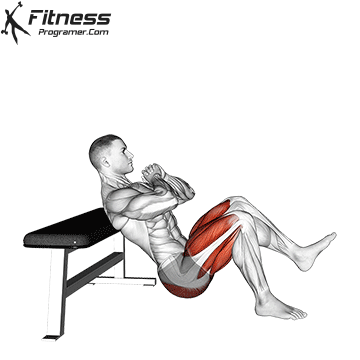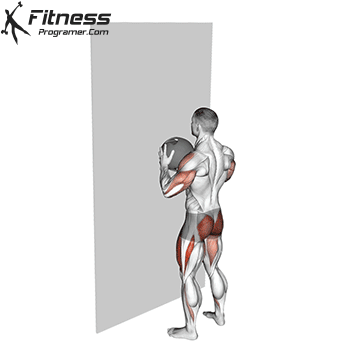Contents
- Benefits of Boxing Training and Skills Developed
- Can I Learn Boxing at Home?
- Learn The Basics of Boxing
- 1. Basic skills
- 2. Basic Training: How to Train for Boxing
Over the years boxing has developed into a popular exercise regimen, appealing to men and women, young and old. Boxing training offers a mix of aerobic and anaerobic exercises that enhance your cardiovascular fitness, muscular strength, and endurance. It also improves agility, balance, coordination, and reaction time.
Many recognize the benefits of a good boxing training program because it really is a total body workout stimulating all the muscle groups. In this comprehensive guide, we will delve into mastering the basic techniques, enhancing your skills, and providing you with valuable information on how to get started in boxing. Let’s lace up our gloves and begin this transformative journey.
Benefits of Boxing Training and Skills Developed
- Cardiovascular Health: Boxing workouts get your heart pumping, enhancing your cardiovascular endurance and helping you burn calories efficiently. It’s an excellent way to improve your overall fitness level.
- Strength and Power: Boxing training helps you build both upper and lower body strength. Throwing punches and performing various drills engage your muscles, leading to increased power and lean muscle development.
- Agility and Coordination: Boxing requires precise movements, footwork, and hand-eye coordination. These skills not only benefit you in the ring but also in your daily life. (Learn how to improve agility)
- Weight Management: Regular boxing training can help you shed unwanted pounds and maintain a healthy weight, making it an effective tool for weight management.
- Stress Relief: Boxing training serves as an excellent outlet for stress and frustration. It allows you to channel your energy into a constructive and controlled environment.
- Self-Confidence: As you progress in your boxing journey and see improvements in your skills and fitness, your self-confidence will naturally grow.
- Discipline and Focus: Boxing requires discipline and mental focus. It teaches you to concentrate on your goals, stay committed, and work hard to achieve them.
- Reaction Time: Boxing sharpens your ability to react quickly to your opponent’s movements and actions, whether it’s dodging punches or countering attacks.
Can I Learn Boxing at Home?
The answer is a resounding “yes”! While enrolling in boxing classes with a professional trainer is ideal, practicing at home allows you to begin building a strong foundation in the boxing.
Basic boxing training encompass the fundamental techniques and concepts that are essential for anyone looking to learn and practice the sport of boxing. These fundamental techniques and concepts are essential for anyone looking to learn and practice boxing. If you’re just starting out, your first focus should be on learning the basic principles of boxing training.
Learn The Basics of Boxing
Basic Boxing Training Includes:
- Boxing Basic skills:
- Boxing stance
- Footwork
- Breathing Technique
- Punches
- Combinations
- Boxing defense
- Basic Boxing Training: How to Train for Boxing
- Mastering Punches and Defense Skills
- Conditioning
- Cardiovascular Endurance
- Strength Training
- Power Training
- Flexibility Training
1. Basic skills
Basic Rules
Warm-Up: Start with light aerobic exercises such as jogging, jumping rope, or shadowboxing for 5-10 minutes to increase your heart rate and warm up your muscles. Follow this with dynamic stretching exercises to improve flexibility and range of motion. Dynamic stretches involve controlled movements, like arm circles and leg swings.
Practice: The practice phase is where you work on your boxing skills, techniques, and combinations. During the practice phase, focus on both offensive and defensive techniques. Work on head movement, blocking, parrying, and slipping in addition to your punches and footwork.
Cool Down: Finish each training session with a cool-down routine, which may involve light stretching and relaxation exercises to help the body recover. Start with light aerobic activity, such as jogging or walking, to gradually lower your heart rate. Perform static stretches, holding each stretch for 15-30 seconds, to improve flexibility and prevent muscle tightness. Focus on stretching major muscle groups, including the legs, arms, shoulders, and back.
A) Boxing Stance
Basic boxing position is the first lesson. It gives you stability, balance and an effective position to throw punches from.
Your choice of stance depends on your dominant hand and foot. If you’re right-handed (orthodox stance), your left leg should be in front. If you’re left-handed (southpaw stance), your right leg should lead.

- Stand with your dominant foot at the back and your non-dominant foot forward, about shoulder-width apart.
- Bend your knees slightly to maintain balance.
- Keep your hands up, with your lead hand protecting your face and your rear hand guarding your chin.
- Tuck your elbows in to protect your body. Position your lead shoulder slightly higher which in turn will be used as a defensive mechanism against the right hand punch of your opponent.
- The chin should always be tucked to give extra support for your neck from your opponent’s punches and your elbows should be tucked in front of your body to block any body shots.
B) Boxing Footwork
Boxing is not just about throwing punches; it’s also about footwork and positioning. It will give you the best chance of hitting your opponent/target and will enable you to move quickly away from your opponent’s counter punches.
Footwork is very important for attack and defense in boxing. Proper punching technique relies on the ability to transfer body weight forward or sideways, which is closely tied to footwork. The boxer’s feet play a significant role in generating power and maintaining balance for effective punches.
Regardless of a boxer’s style, they must be proficient in moving in various directions (forwards, backwards, left, and right) at different speeds. This versatility allows them to adapt to different opponents and situations.
Practice 1: Forwards and backwards
Start with a boxing stance. Maintain the distance of your feet, whichever direction you go.
- Moving Forwards: As you move towards your target, lift your lead foot with the knees slightly bent. Let the rear foot thrust you forward.
- Moving Backwards: When moving away from the target, lift your rear foot and pull away by using the force from the front leg.
Practice 2: Lateral movement
- Moving Left: When moving to the left, the front leg moves in the desired direction first, followed by the rear leg.
- Moving Right: When moving to the right, push off from your front foot. Move your back foot to the right, maintaining a balanced stance. This lateral movement allows you to sidestep your opponent’s attacks and change angles effectively.
Repeat each step 10 times, starting with a boxing stance.
- 1-2 Forwards and backwards
- 1-2 Move Left
- 2-1 Move Right
- 1-2 Forwards and backwards
Always use the lead foot first to move forward, back foot first to move backwards, left foot first to move to the left and right foot first to move to the right. Start slowly to ensure proper form and gradually increase your speed as you become more comfortable.
C) Breathing Technique
Effective breathing technique is a must in any activity. In boxing, it is very important to breathe properly! Improper breathing will negatively affect your overall performance.
Breathe in through your nose. Exhale through your mouth with every punch you throw.
If you want to throw a four punch combination, exhale each of the 4 times you throw your punches (small exhalations).
As you exhale, try to make a ‘shhhh’ or ‘hiss’ sound. Some people don’t like the sound, they find it corny or funny but it is a very effective way to exhale in a boxing activity.
Exhaling at every strike will make your punches lighter on you, will land on the target much faster and it gives more power to your blows.
There are many benefits in effectively breathing in boxing. Good supply of oxygen to the brain can keep you mentally alert, quick-thinking and you will have more energy.
Simply put, a fighter who can not sufficiently supply his body with oxygen will not last long and will not be able to perform at the highest level.
Practice proper breathing while you shadow box or while punching the bags.
After a while your body will get the hang of it, you will breathe properly without any conscious effort. You definitely will have more stamina in boxing training and you’ll perform with a more powerful energy.
D) 4 Basic Boxing Punches for Beginners
In boxing, there are four basic punches: the jab, hook, uppercut, and the straight right (or straight left for southpaws), often referred to as a ‘cross’. These four punches form the basic of all other types of punches.
- Jab
- Cross
- Hook
- Uppercut
1. Jab:
The jab is a quick, straight punch thrown with the lead hand. It is used to maintain distance, set up other punches, and gauge the opponent’s reactions.

It can be the most important and efficient blow a fighter can use against his opponent. It is effective as an offensive weapon and as a defensive tool.
A good, quick and powerful jab can will help you set up a good offensive combination and at the same time it is a good defense.
- Follow the basic stance with your left foot forward, right hand inclose to the right side of your face just below the right eye and your left hand about 6 inches away from your face.
- Extend your arm fully, maintaining it straight, and swiftly retract it. Twist your wrist clockwise when throwing your left punch before reaching your target.
- Jabs serve various purposes, such as measuring distance, setting up other punches, and keeping your opponent at bay.
- They can be used both defensively and offensively, making them a versatile tool in a boxer’s arsenal.
Practice: Stand in your boxing stance, focusing on maintaining a solid foundation. Practice throwing the jab repeatedly for 3 rounds, each lasting 20-30 seconds.
2. Cross (Straight):
The cross, known as a straight or cross in boxing, is a powerful punch thrown with your rear hand. It is a fundamental punch used for delivering knockout blows and is often thrown after a jab to maximize power.

Comes from your strongest hand, therefore, it can be a knockout punch. Learn this punch well and you can use it to gain victory.
If you are right handed, then the left side of your body is angled towards your target. if you are left handed, then the right side of your body should be angled towards your target.
- Start with the basic stance, keeping a good balance.
- Keep both hands up guarding your face, your forearm protecting your chest, and your arms tucked to the sides of your ribs.
- Pushing off from your back foot, tilt shoulder, trunk and pelvis forward all in one quick go.
- Extend your arm straight and fast, twisting your wrist counterclockwise before landing on your target.
- After the blow, the same side of your body must be towards your target.
- Quickly bring back your arm to the guarding position.
Practice: Stand in your boxing stance and work on your cross for 3 rounds, each lasting 20-30 seconds
Combo Practice: Jab-Cross (1-2)

Start with a quick jab (left hand) to gauge distance. Follow it immediately with a powerful cross (right hand).
Combo Practice: Jab-Jab-Cross (1-1-2)

Execute two quick jabs (left hand) consecutively. Follow up with a powerful cross for added impact.
3. Hook:
A hook is a curved punch that is thrown with a bent arm, targeting the opponent’s head or body from the side. There are both left hooks and right hooks, depending on which hand is used. Hooks are effective for targeting an opponent’s sides and generating significant power.

It is somewhat difficult to perfect but once you do so, it is a very powerful blow. Many great boxers have been knocked down to the ground by this awesome punch.
Practice throwing a hook after the jab-straight (one-two) combination. Since many are caught unaware by the hook, you should not only practice to perfect this but also to defend from it.
- Maintain a good balance by keeping your right foot firmly on the ground. Lift the heal of your left or lead foot, swiveling it outward.
- The lead toes and hips rotate forward along with the torso swiveling to the right towards the target while the arm is bent 90 degrees, leveled horizontally from the ground.
- Forearm should be parallel from the ground on impact of the punch.
- It is aimed at the side of your opponent’s face or body.
- Once the fist lands on the target, a fighter should instantaneously return to initial position.
Practice:
Jab – Jab – Hook (1-1-3): Execute two quick jabs consecutively. Follow it immediately with a powerful hook. Repeat for 20-30 seconds.
Jab – Cross- Hook (1-2-3): Commence with a jab (left hand). Follow it with a right cross. Finish the combination with a left hook to the head or body.
4. Uppercut:
An uppercut is an upward punch that is thrown from a crouched or low position, targeting the opponent’s chin or body. Like hooks, there are left and right uppercuts, and they are often used in close-quarters combat to surprise an opponent.

It is another powerful blow, thrown at close range. Typically, it is the chin that is the target.
It is powerful and dangerous, beware with this move because it might knock your opponent unconscious. Usually, your more dominant hand gives a stronger force on impact.
- Keep your balance by slightly bending your knees.
- Shift your body weight to the lower extremity whichever side your uppercut is coming from.
- Bending down slightly, twist your hips and torso forwards and upwards.
- While your arms are bent and curled, throw your uppercut in an upward motion hitting your target.
- No matter what blow you strike your opponent with, you must always keep your guard up and be ready for a counter punch.
Practice:
Combo Practice: Jab-Jab-Uppercut (1-1-4):

Throw two quick jabs (left hand) consecutively. Finish the combination with a right uppercut.
Jab-Uppercut-Hook (1-4-3): Begin with a jab (left hand). Follow it with a right uppercut. Conclude the combination with a left hook.
E) Boxing Combinations: Your Edge In Fighting!
Boxing combinations are composed of two or more punches thrown successively. Learning to have many boxing combinations can give you the edge in fighting.You can have more chances of winning if you have many sets of combinations in your arsenal.
If you have only a single punch or few sets of combinations, after a while your opponent will read your movements and will be able to anticipate your next moves. You can set up your powerful punch against your opponent by throwing two or more blows. The more punches thrown, the more chances of landing blows to your opponent.
Do bear in mind that you are also opening yourself up to a counter punch if you’re not careful. Try to throw your blows quickly and accurately hitting your target.
Always be prepared for counter punches by stepping out of the way or try to block, slip, or duck. Knowing your opponents moves will allow you to anticipate his counter punches.
Boxing Combination Tips
- Don’t try to learn and practice many sets of combinations all at once. You should do only one to two sets of combinations a week.
- Practice it everyday or as often as you can for the whole week. Repetition builds the neuronet in your brain making your boxing combinations automatic for you.
- When you’re doing a particular combination, focus on that the whole round. Repeat it for a couple more rounds. You must allow your body and muscles to get used to that particular set of combination. Build up your memory muscles for that combination.
- Always remember that you’re last punch is your power punch. When throwing 3-punch combination, the last punch is the power punch. The first two would be your set-up punch.
Here Are Some Basic Boxing Combinations
Practice is essential for refining your punching skills in boxing. As you practice these combinations, remember to start at a slower pace and progressively increase speed and power while maintaining proper technique and form.
| Target: Head Only | Head And Body |
|---|---|
| Jab – Cross | Jab – Cross to the body |
| Jab – Cross – Jab | Jab – Cross to the body – Jab |
| Jab – Cross – Hook | Jab –Cross – Hook to the body |
| Jab – Cross – Left Uppercut | Jab – Cross – Left Uppercut to the body |
| Jab – Cross – Hook – Cross | Right Uppercut – Hook – Cross |
| Jab – Jab – Cross – Hook | Jab – Jab to the body – Cross |
| Hook – Cross – Hook | Left Uppercut – Cross – Hook |
There are many sets of combinations out there. It’s up to you to mix different punches together, as long as you throw it fast and you have good balance while throwing the combinations.
F) Boxing Defense – PROTECT YOURSELF!
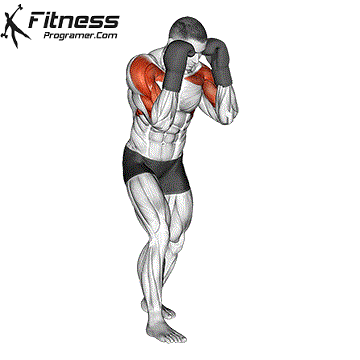
Boxing defense skills are crucial for any boxer to effectively protect themselves from their opponent’s punches while minimizing the risk of injury. A well-rounded boxer should develop various defensive techniques and strategies to avoid or block punches. Here are some fundamental boxing defense skills:
- Footwork: Proper footwork is the foundation of good defense. Moving in and out of range, pivoting, and circling your opponent can help you avoid punches and create angles for counterattacks.
- Head Movement: Moving your head is essential to evade punches. Techniques like slipping (moving your head to the side) and ducking (bending at the waist) help you avoid getting hit in the head.
- Blocking: Blocking involves using your arms and gloves to absorb or deflect your opponent’s punches. There are different types of blocks, including high guard (covering your head with your gloves), low guard (protecting your body with your elbows and forearms), and parrying (redirecting punches with your gloves).
- Rolling: Rolling is a defensive maneuver that involves bending at the waist and rotating your upper body to avoid punches. This technique is particularly effective for evading hooks and uppercuts.
- Clinching: Clinching is a strategy where you tie up with your opponent in close quarters, preventing them from landing clean punches. It can buy you time to recover if you’re hurt or to disrupt your opponent’s rhythm.
- Slipping and Countering: Slipping punches not only helps you avoid them but also sets you up for counterattacks. After slipping, you can quickly return with your own punches.
- Distance Control: Controlling the distance between you and your opponent is crucial. Maintaining the right range allows you to avoid getting hit and to strike when the opportunity arises.
- Feinting: Feinting involves faking an attack to create openings in your opponent’s defense or to make them react predictably. Feints can help you set up counterattacks.
There are many diffirent defensive style in boxing. Heavyweight legend Ken Norton uses cross-armed style guard, Winky Wright uses peek-a-boo style, Joshua Clottey uses high guard defense.
Floyd Mayweather Jr has one of the best defensive style in the history of boxing. He utilizes the shoulder roll defense. Having a good boxing defense style will not only give you the chance of winning the fight but also minimize chances of injuries due to blows which you could have avoided.
2. Basic Training: How to Train for Boxing
In the preceding section, we delved into the fundamental techniques and skills of boxing. In this section, we will focus on strategies and methods to develop and improve these skills.
You’ll discover ways to enhance your physical strength and endurance through targeted strengthening exercises. Additionally, we’ll delve into techniques designed to sharpen your reflexes and overall fitness, ensuring you are well-prepared for the rigorous demands of this sport.
A) Mastering Boxing Punches and Defense Skills
The journey to becoming a skilled boxer begins with mastering the fundamentals. Repeat the footwork, punches, and defensive moves until they become a reflex action for you. If you do not have a partner you can train with, get creative! You can instead imagine an opponent throwing punches at you.
To enhance your boxing prowess, consider incorporating the following training exercises into your regimen. Begin by executing these moves slowly and deliberately. As you gain confidence and consistency in your form, gradually increase the speed of your movements. Remember that mastering boxing skills takes time and practice.
1- Shadow boxing:

Shadow boxing is a crucial part of boxing training that helps improve speed, technique, and fluidity of movement. Visualize an opponent and work on your combinations and defensive maneuvers.
2- Slip Rope Drills
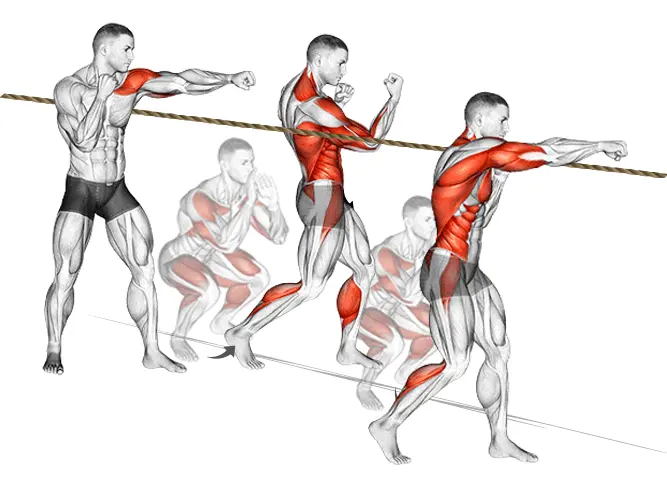
Rope drills will enhance your defensive abilities as well as your counter punching techniques. If you master this drill it will help you go in and out with out getting caught by your opponent. It is the best way to train your body to avoid hooks and looping straights.
This type of drill will really work on combining your agility, reactive speed, sense of coordination and balance.
How To Do The Drill
- Tie any kind of rope to two opposite poles or hooks. It should be leveled to the height of your shoulder.
- Begin with the proper boxing stance.
- You must start from one end of the rope, move forward towards the other end and go backwards to the starting point.
- Move your body left to right, right to left by sliding in and out from under the ropes, with out your feet or legs crossing the midline.
- Drop your weight as you go under the rope moving from side to side, left foot moves to the left side and right foot moves to the right side. This really good in training your footwork.
- Look straight ahead as you do this. You must learn to maintain your line of vision towards your opponent.
When your body gets used to the rhythm of the movements, you can then start to add a variety of punch combinations as well as counter punches.
3- Speed Bag:
Working the speed bag helps enhance hand-eye coordination, rhythm, and hand speed.

The speed bag drill is a great boxing exercise for hand-eye coordination. It also conditions your shoulders and back muscles for punching because your arms are up the whole time your doing the drill.
How To Begin
- Make sure that the bottom of the bag should be in line with your chin so that it is adjusted to your height.
- Stand in front of the bag, feet must be shoulder width apart, raise your hands to your face and start hitting with your knuckles or by the side of your fist (hammer fist).
- When you first hit the bag, the ball should bounce off the platform 3x before you can hit it again. Let it first bounce away from you, then towards you, and then backwards away from you. As it moves towards you, then that is when you strike a punch.
- You can also try to hear the bounce. It will make a tat-tat-tat sound from bouncing off the platform. After you hear the 3rd tat sound, you can punch again.
- It might be a little hard to go with the 3-point bouncing/swinging of the speed bag. Speed bag drill is a rhythm drill. Get your rhythm first before you try to speed up the pace.
- Try to hit the bag 3x with your left hand before switching to the right. If you get into the groove, try hit it twice with one hand then switch to other hand, until you can hit the bag with single alternating punches from left to right.
Some people like to focus on just punching the bag and keeping their feet flat on the ground, but instead try bouncing with your feet. You will burn more calories and develop upper and lower body coordination.
4- Heavy Bag Training: Increase Punching Power

This bag drill is one of the oldest exercises in boxing and most often used. It has so many benefits when used properly in boxing training. It will improve your stamina and punching power.
It is also where you perfect your punching combinations. The bonus is that you will burn a lot of calories doing it.
YOU MUST wrap your hands properly and always wear a very comfortable pair of training gloves. You can get injured if you don’t wear proper boxing equipments, so ALWAYS protect your hands in hitting the bag.
As you start hitting the bag, try to do it slowly at first. Throw single and slow punches, and then as you get the hang of it, increase your intensity.
Practice throwing combinations and also practice your footwork. ALWAYS breathe in through your nose and exhale through your mouth with every single punch you make.
You can do so many things with the bag. You can try to imagine that you have an opponent and practice your defense too. It is a total body workout and a total boxing training. If you workout at home, the bag is a really good investment to make.
Also there are so many drills you can do like basic punches drill, combination drills, inside and outside drills, speed drills and so much more.
5- Agility (Reaction Ball): Improving Reflexes
Boxing challenges your reaction time, improving your ability to respond quickly to changing situations.
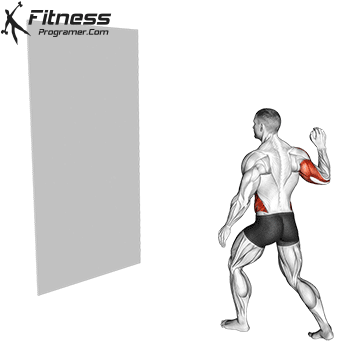
In boxing, split-second decisions can make all the difference between landing a punch and getting hit. You have to constantly assess your opponent’s movements, anticipate their actions, and decide on your own responses. This quick decision-making process hones your cognitive abilities and helps you become more adept at making rapid choices in various situations.
Boxing requires precise hand-eye coordination to land punches accurately and evade incoming strikes. Training your brain to coordinate these movements swiftly enhances your overall hand-eye coordination, which can translate to better reaction times in other activities and sports. (Learn how to use the reaction ball)
B) Boxing Training- Conditioning
Preparing for a boxing match involves a structured training regimen that incorporates a range of specific exercises and drills aimed at enhancing a boxer’s overall performance. These training routines target essential aspects of the sport, including speed, endurance, strength and power. By diligently practicing these drills, boxers can refine their techniques and rapidly elevate their physical condition in preparation for the upcoming fight.
C) Endurance Training: (Aerobic and Anaerobic)
Boxing matches can be grueling, lasting several rounds, each typically lasting 3 minutes. The ability to maintain a high level of performance throughout the entire fight is crucial. Boxing requires both aerobic and anaerobic conditioning. Aerobic endurance helps in maintaining a steady pace and recovering between rounds, while anaerobic conditioning is essential for short bursts of high-intensity effort, like throwing powerful punches.
1- Roadwork:
Running is a staple of boxing conditioning. Boxers often go for long-distance runs to build cardiovascular endurance. This helps improve stamina and ensures you can maintain a high work rate during a fight.

2- Jump Rope:
Jumping rope is an excellent cardiovascular exercise that improves overall endurance and cardiovascular fitness. This enhanced endurance can help boxers maintain their energy levels and performance throughout a fight.

When boxers have better cardiovascular conditioning, they are less likely to fatigue quickly, allowing them to throw punches with power and precision even in later rounds. Additionally, jumping rope is associated with improvements in muscle strength, power, rate of force development, and reaction time. It is suggested that these improvements will contribute to the lower extremity strength necessary to throw punches effectively (1).
Jump rope training is not only an effective cardiovascular workout but also an excellent way to improve your footwork and coordination, which are essential skills for boxing.
Initially, aim for 3-5 minutes of continuous jumping, gradually increasing the duration as your fitness improves. You can incorporate jump rope training into your daily routine, either as a warm-up or a dedicated workout.
Tips:
- Start with basic jump rope techniques. These include two-footed jumps, alternating foot jumps, and high knees. Practice these techniques until you’re comfortable with them.
- Incorporate interval training into your jump rope routine. This means alternating between periods of high-intensity jumping and active rest or slower jumps. For example, jump at maximum effort for 60 seconds, then slow down for 30 seconds to recover. Repeat this for 5 rounds.
3- Sprint

Sprinting is a short, high-intensity burst of speed over a relatively short distance. Boxing requires bursts of speed and power. Sprint training is an integral component of a boxer’s conditioning routine, as it helps improve explosive speed, agility, and overall cardiovascular fitness.
Here’s how to incorporate sprint training into your boxing workout regimen:
- Hill Sprints: Find a steep hill or incline. Sprint up the hill as fast as you can, focusing on explosive power. Walk or jog down for recovery, and then sprint up again. Start with a few repetitions and gradually increase the number as you progress.
- Sprint Intervals: Find a flat surface like a track or open field. Sprint at maximum effort for a set distance or time (e.g., 100 meters or 20 seconds), and then walk or jog at a slow pace for recovery. Repeat this cycle for several rounds.
- Distance and Repetitions: The distance and repetitions will depend on your fitness level. Beginners may start with shorter sprints (e.g., 50 meters) and progress to longer distances (e.g., 100 or 200 meters) as they become more conditioned. Aim for 4-8 repetitions per session.
- Rest and Recovery: Ensure you have adequate recovery time between sprints. The duration of your recovery period depends on your fitness level and the intensity of your sprints. Generally, it can range from 1 to 4 minutes.
- Progression: Over time, increase the intensity or duration of your sprints and decrease the recovery time. This will help you improve your anaerobic and aerobic conditioning.
- Frequency: Incorporate sprint training into your overall boxing training program 1-2 times a week. Make sure to space out these sessions to allow for recovery.
4- High-Intensity Interval Training (HIIT):
HIIT involves short bursts of intense exercise followed by brief rest periods. It’s an effective way to improve both cardiovascular fitness and anaerobic capacity, which is important for explosive movements in boxing.
A typical HIIT session can last between 5 to 20 minutes, making it a time-efficient workout. Incorporate Include sprint or HIIT workouts 1-2 times a week in your training plan and allow rest days for recovery.
Incorporating sprint intervals into a HIIT routine can be highly effective. A sample HIIT workout for boxing might involve sprinting for 30 seconds followed by a 30-second recovery jog or rest, repeated for several cycles. The specific duration and intensity of intervals can be adjusted based on the boxer’s fitness level and training goals.
Here’s a 7-Minute HIIT Workout
D) Strength Training:
Strength training is a critical aspect of a boxer’s training regimen because it enhances your ability to generate power, maintain stability, and withstand blows.
Exercise Selection:
- Incorporate strength training exercises to build overall strength. Focus on compound movements like squats, deadlifts, bench presses, and overhead presses.
- Calisthenics such as push-ups, pull-ups, dips, and planks can enhance functional strength, particularly in the upper body and core. (Strengthen Your Core with Just 3 Exercises)
Muscle strength in both the upper and lower limbs is crucial for success in boxing. These exercises will help you develop the upper and lower body strength necessary for delivering powerful punches and maintaining a solid defense.
Weight training should be periodized to avoid overtraining and injury. If you haven’t done strength training before, the 3×5 Strength Program is a simple but effective way to build a solid strength foundation.
E) Power Training Exercises
Once a solid base of strength is established, shift your focus to power training.
Boxing punches are dynamic and brief actions, requiring well-developed muscle power. This phase should include ballistic exercises and explosive techniques aimed at improving your ability to generate force quickly and explosively.
Research indicates that increasing hand speed can result in more impactful punches. This phenomenon can be explained theoretically by the relationship between thrust and momentum. Boosting speed leads to an increase in momentum (mass × velocity), ultimately resulting in greater force (impulse = force × time).
To enhance punch speed, it is advisable to prioritize exercises that target the initial portion of the force-time (ft) curve. This entails engaging in ballistic exercises aimed at improving your Strength Development Rate. Effective exercises for this purpose include plyometrics, which encompass activities such as medicine ball throws, weightlifting, and their various modifications.
Ballistic exercises are particularly recommended because they enable maximum acceleration throughout the entire range of motion. Furthermore, employing lighter to moderate loads helps train the velocity component of the force equation (P = force (f) × velocity (v)) more effectively.
(Learn to Design Program for Power Training.)
F) Flexibility Training:
Flexibility training is crucial for boxers as it helps prevent injuries, improve range of motion, and enhance overall performance.

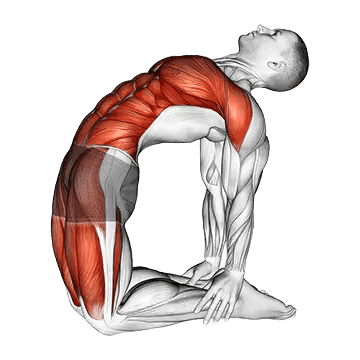
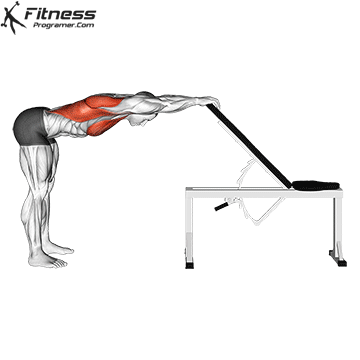
After your workout, when your muscles are warm, engage in static stretching. Focus on stretching major muscle groups, such as the legs, hips, back, shoulders, and arms. Hold each stretch for 15-30 seconds, breathing deeply and gently increasing the stretch over time. Key stretches for boxers include:
- Quadriceps stretch
- Hip flexor stretch
- Hamstring stretch
- Calf stretch
- Groin stretch
- Chest stretch
- Shoulder stretch
Conclusion:
Boxing is more than just a sport; it’s a lifestyle that promotes physical and mental well-being. As you embark on your journey into the world of boxing, remember that it’s not about becoming a professional fighter, but about improving your fitness, self-confidence, and overall health. Whether you’re hitting the gym for a full-body workout or pursuing the art of boxing as a discipline, the basics we’ve covered here are your first steps towards a rewarding and fulfilling experience in this captivating sport. Stay tuned for more in-depth articles that will help you progress in your boxing training.
References:
- Turner A., Baker E.D., Stuart M. Increasing the impact force of the rear hand punch. Strength Cond. J. 2011;33:2–9. doi: 10.1519/SSC.0b013e318232fdcb
- Optimum Power Loads for Elite Boxers: Case Study with the Brazilian National Olympic Team PMCID: PMC6162793
- Chaabene H., Tabben M., Mkaouer B., Franchini E., Negra Y., Hammami M., Amara S., Chaabene R.B., Hachana Y. Amateur boxing: Physical and physiological attributes. Sports Med. doi: 10.1007/s40279-014-0274-7.

